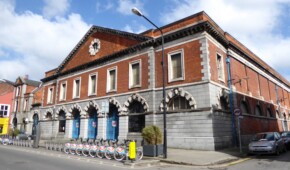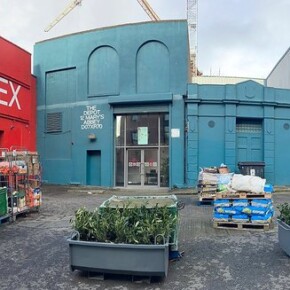Council admits demolition of historical bomb shelters
Dublin People 17 Mar 2012DUN Laoghaire Rathdown County Council has admitted
that it should have made a detailed archaeological record of two Second World
War bomb shelters in a Southside park before it demolished the structures.
Former professional archaeologist Shane Cahill (27),
who lives in Cherrywood, notified this newspaper recently that the beehive
shaped bomb shelters, built in 1939 and located in Cabinteely Park, were
demolished by the council.
He expressed concern that the local authority had
demolished the historically interesting concrete bomb shelters, examples of
which are relatively rare in this country, without making any record of their
existence.
Mr Cahill noted that the council considered the bomb
shelters to be of sufficient historical interest to include them in its ‘Did
You Know – Celebrating Forgotten Aspects of Our Local Heritage’ publication of
2009.
He also pointed out that a similar beehive shaped
shelter is featured as a permanent exhibit at the National Museum at Collins
Barracks.
“It was upon visiting the park for the first time in
some months that I found the two beehive constructions to be missing,
? Mr
Cahill explained.
Demolished
“I immediately contacted the council enquiring where
they were and what fate had befallen them. I discovered through their reply
that the shelters had been demolished.
?
Southside People has seen a copy of an email sent by
the Senior Executive Parks Superintendent at the council in response to queries
by Mr Cahill regarding the demolition of the bomb shelters.
In the mail, the superintendent said council staff had
“re-graded
? the area in front of Cabinteely House and removed an
“unattractive
?
metal palisade fence at that location.
“During these works our staff geared up to move the
two mass concrete shelters, which were not of historical value,
? the
superintendent wrote.
“They found they were unsafe and prone to disintegrate.
In the circumstances a decision was made to demolish them on grounds of
safety.
?
However, Mr Cahill was dissatisfied with the response
he received and sent another email to the council’s parks department.
Mr Cahill continued:
“I contacted the council once
again to ask them whether or not the site was recorded before it was destroyed.
The council confirmed that no recording was done. They also conceded that, following
consultation with their heritage officer, such recording should have been
carried out.
?
The parks superintendent subsequently replied to Mr
Cahill by email saying that he had made further enquiries regarding the
sequence of events leading up to the demolition of the bomb shelters.
He wrote:
“The decision regarding demolition of these
structures and their historic importance was made by our works team at
Cabinteely Park, for whom I am ultimately responsible.
?
“I have consulted with our Heritage Officer (Tim
Carey), who confirms that a record of the structures should have been
undertaken.
“Arrangements are now in place for Mr Carey to work
more closely with Parks Department operational staff, which will ensure that
best practice is followed in such matters in future.
?
Vulnerable
The bomb shelters were roughly two metres high with
32cm thick walls. Although they were not built in huge numbers, some were
located in the Dublin area, as well as along the east and south east coast,
which were most vulnerable to German attack.
The concrete shelters were most commonly built on
lands associated with public buildings and private gardens as well as
institutions. A number still survive on
the Southside and elsewhere.










